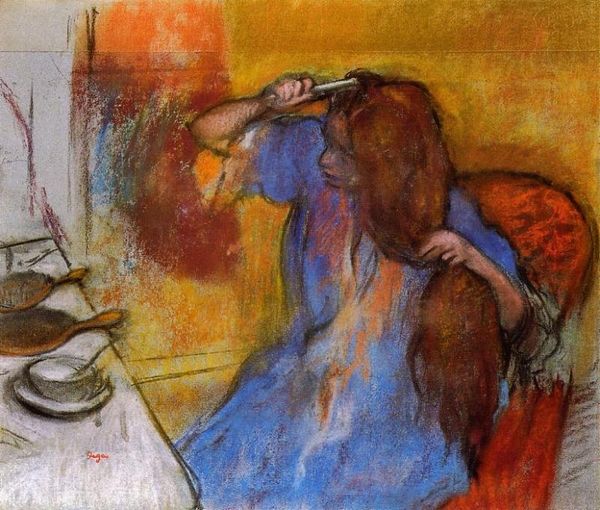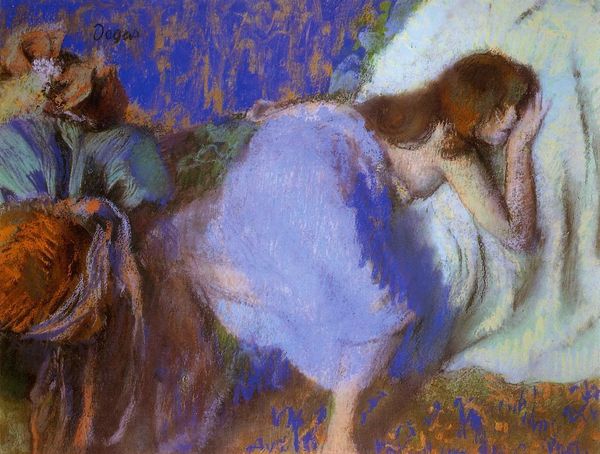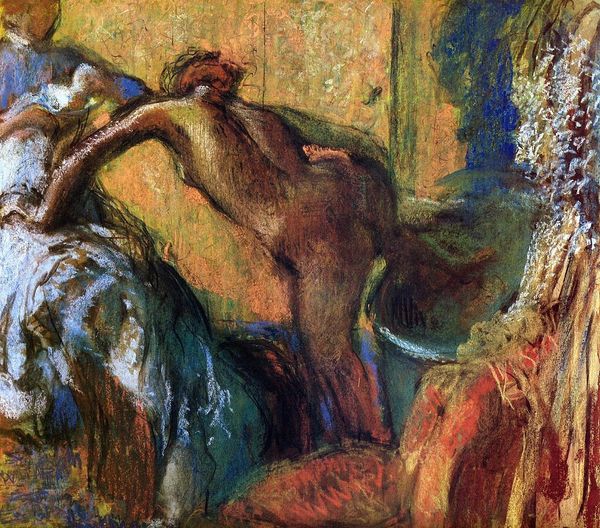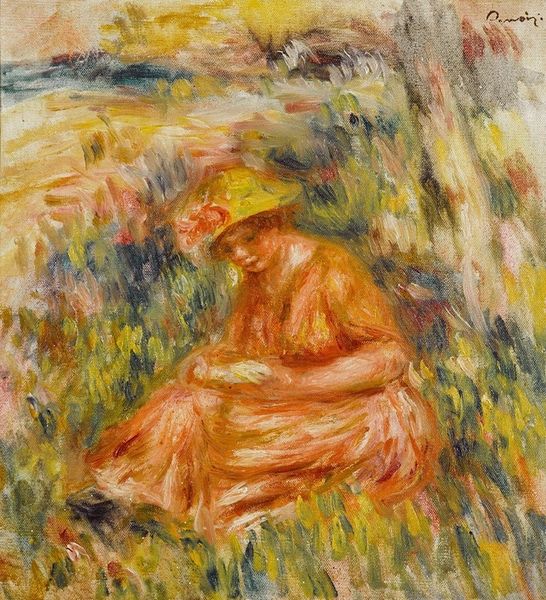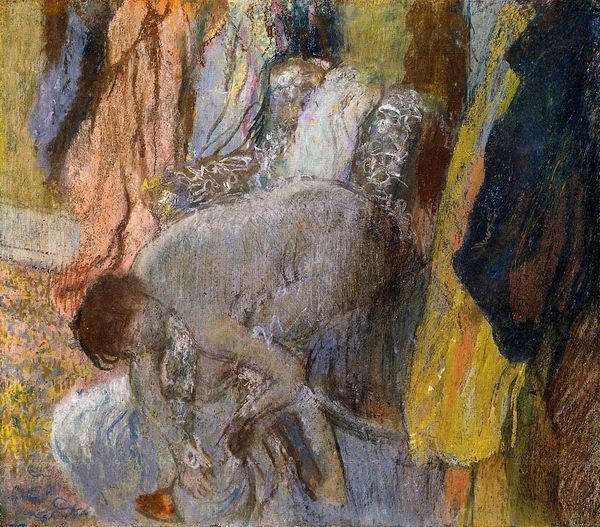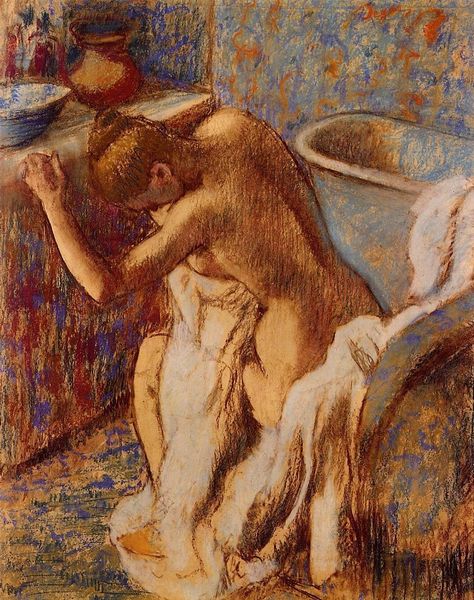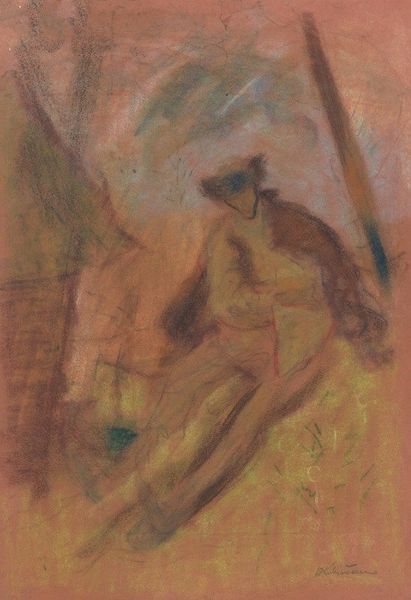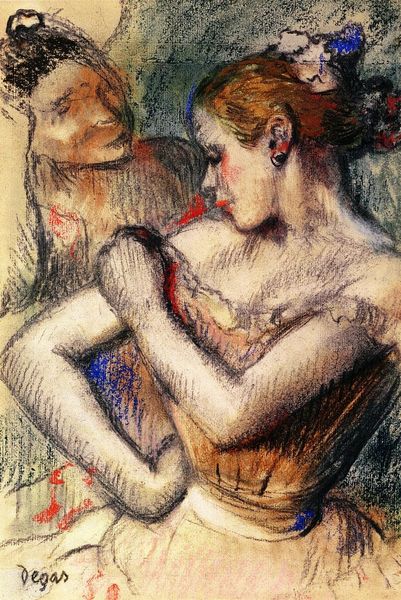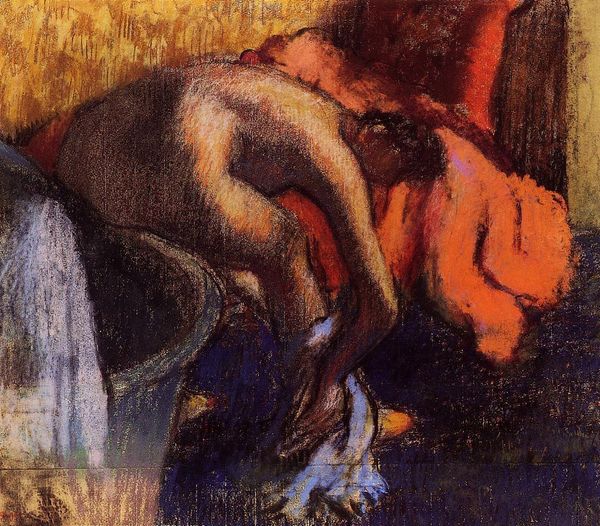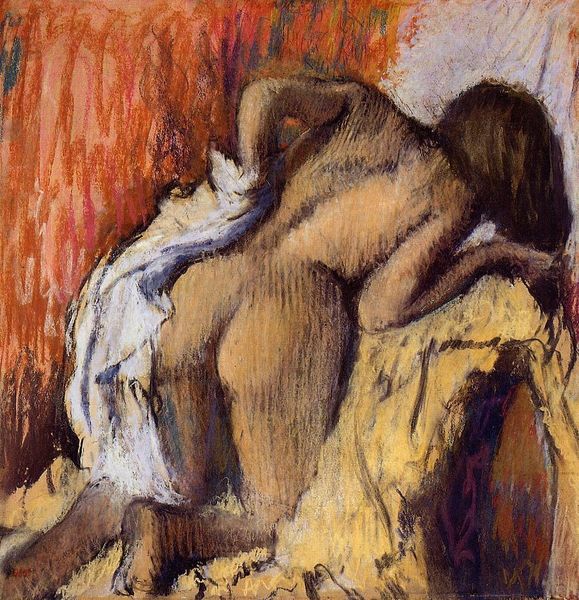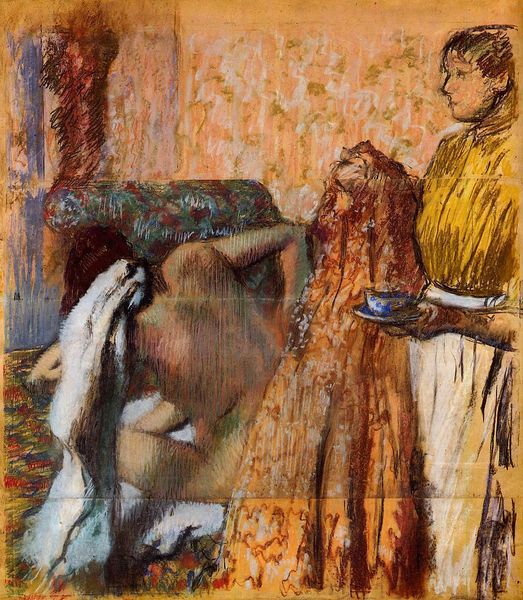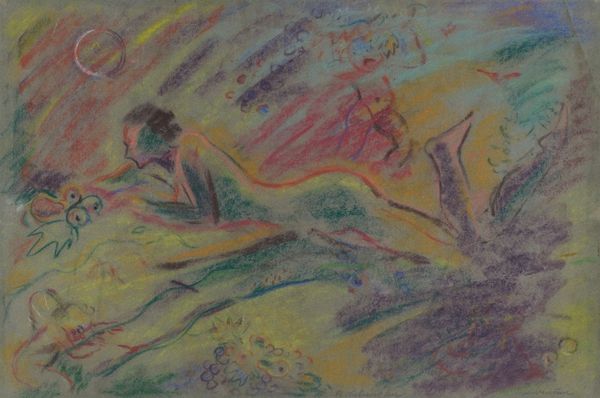
drawing, plein-air, oil-paint, pastel
#
portrait
#
drawing
#
impressionism
#
plein-air
#
oil-paint
#
landscape
#
figuration
#
oil painting
#
painterly
#
genre-painting
#
pastel
Copyright: Public domain
Curator: This is Edgar Degas' pastel drawing, "Woman Seated on the Grass," created around 1882. It's part of a private collection. Editor: There's something quietly unsettling about it. The earthy palette, ochre and browns, is muted, and the composition is oddly tilted. The figures are cropped, giving a sense of transience. Curator: It reflects Degas’ interest in depicting modern life and leisure. His art captures glimpses of fleeting moments of social interactions with a focus on movement, and especially the lives of women during this period. Editor: That may be true, but he’s used very strong contouring. And, with all the visible layering and hatching of color, it’s also a study in form, using line to give shape and create a feeling of three dimensions in what is technically a drawing. Curator: Precisely! Degas sought to capture candid moments rather than idealized images. Look how he presents the women in ordinary clothing, absorbed in what seems to be everyday conversation and avoiding posed arrangements and expressions that you might expect in portraits of that era. It challenges conventional portraiture. Editor: Note that the figures blend so organically into the environment that it begs the question of whether the composition truly emphasizes these particular human subjects; they're certainly given equal weight alongside their environment. Curator: His positioning of women within these landscapes sparks discourse concerning gender dynamics and power within society at that time. Women often found themselves positioned—literally and figuratively—within patriarchal social environments. Degas art frequently highlights their interactions and individual agency. Editor: What strikes me is the asymmetry. Degas directs our attention through carefully placed shadows and strategically positioned shapes rather than anything sentimental in the subjects' narrative. Ultimately, his compositional strategies hold this piece together, generating a particular energy for our eye as viewers. Curator: Indeed. This intimate glimpse into an everyday scene lets us consider broader conversations concerning identity, leisure and even class within nineteenth century French society. Editor: So, Degas uses impressionistic gestures with carefully calculated construction. He's interested in form and the possibilities afforded by color relationships as a means to create visually captivating tensions in the space. A truly deft blend of styles at play.
Comments
No comments
Be the first to comment and join the conversation on the ultimate creative platform.
